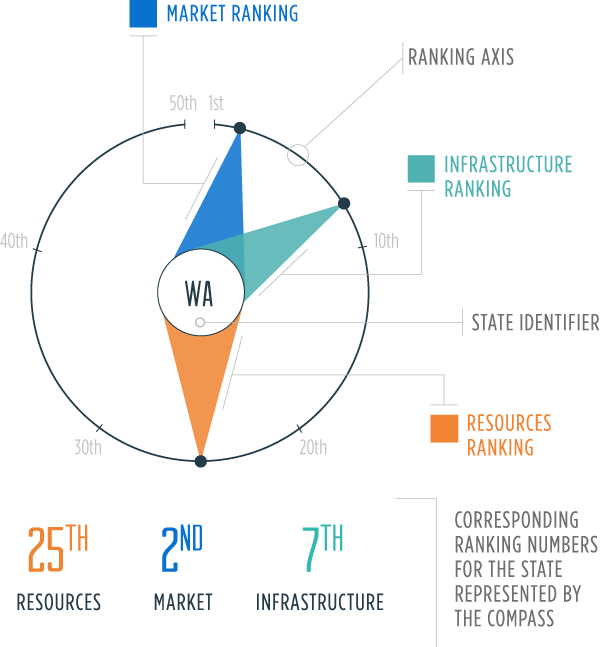Solar Southwest > Utah
Resources: A measure of total energy production and consumption per capita
Market: The cost of consumption, measured in electricity prices and gasoline taxes
Infrastructure: Capacity to generate and refine energy sources; miles of pipelines
The mining sector—including petroleum, natural gas and coal extraction—was Utah's fastest-growing economic sector between 2003 and 2013, with a compound annual growth rate of 14.7%. Oil production more than doubled during this period.
About one-fourth of the state's total crude oil production in 2013 came from tribal lands.
Utah's five refineries process crude oil primarily from Utah, Colorado, Wyoming and Canada. The recently opened UNEV pipeline connects refineries in Utah to a terminal north of Las Vegas, Nevada.
Production trillion btu
Oil
Gas
Coal
Wind
Solar
Hydro
Biofuel
Nuclear
net energy Production trillion btu
Consumption trillion btu
Oil
Gas
Coal
Renewable
Nuclear
Gasoline Tax total state + federal, 2014
UT
USA
Key Policies
Sets a voluntary goal of using cost-effective eligible renewable energy resources to provide 20% of their 2025 adjusted retail electric sales.
Requires the use of a motor gasoline blend with low volatility in the densely populated Salt Lake City and Provo/Orem areas.
Requires permits and surety for oil and gas well drilling. Compliance bonds begin at $1,500 and increase for deeper wells.
Electricity net production, trillion btu
UT
USA

